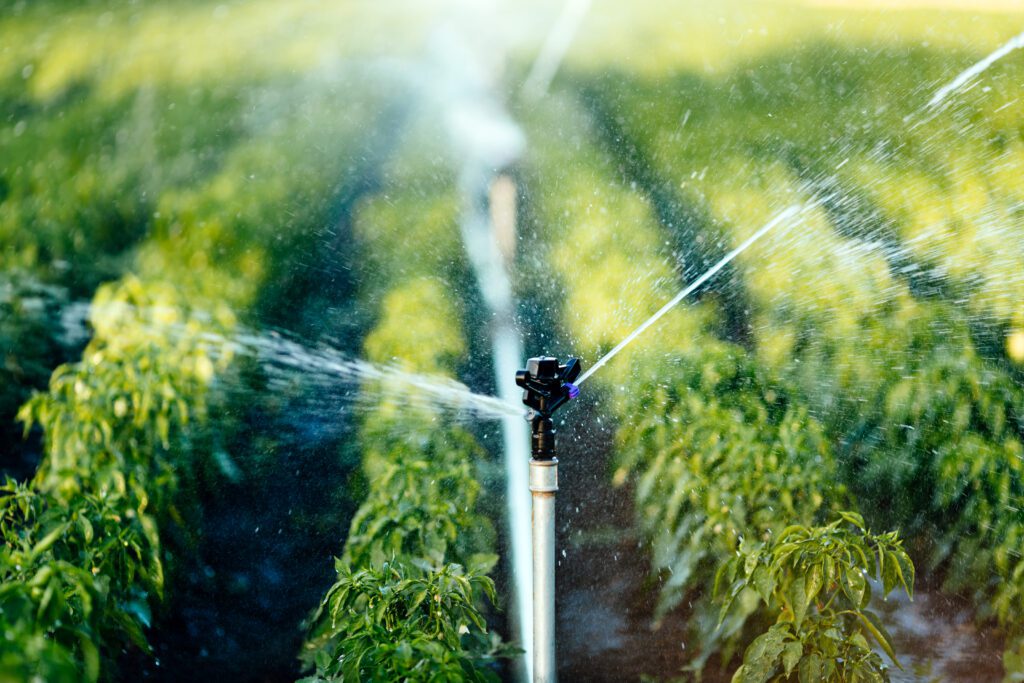Making sure you are completing routine maintenance of your irrigation system is essential to ensure its efficiency and longevity. Here are some key steps and tips to help you keep your irrigation system in top condition:
Regular Inspection and Maintenance
- Check for Leaks and Clogs:
- Inspect the system for visible leaks, broken or damaged components, and clogged nozzles or emitters.
- Run the system and walk the entire area to identify any wet spots or areas that are not getting water.
- Clean the System:
- Clean nozzles, emitters, and filters regularly to remove dirt, debris, and mineral buildup.
- Use a small brush or toothpick to clear any clogs.
- Check Water Pressure:
- Ensure that the water pressure is within the recommended range for your system. High pressure can damage components, while low pressure can reduce efficiency.
- Install a pressure regulator if necessary.
- Adjust Sprinkler Heads and Emitters:
- Make sure all sprinkler heads and emitters are properly aligned and positioned to water the intended areas.
- Adjust the spray pattern and coverage as needed to avoid overspray and ensure even distribution.
Seasonal Maintenance
- Spring Startup:
- Inspect the system for any damage caused by winter weather.
- Slowly turn on the water supply to avoid pressure surges.
- Check each zone for proper operation and adjust as needed.
- Summer Maintenance:
- Monitor the system more frequently during peak watering season to ensure it’s functioning correctly.
- Adjust the watering schedule based on weather conditions and plant needs.
- Fall Shutdown:
- Reduce the watering frequency as plants require less water.
- Inspect and clean the system thoroughly before winterizing.
- Winterization:
- Drain all water from the system to prevent freezing and damage.
- Use compressed air to blow out any remaining water in the pipes and components.
- Insulate above-ground components or bring them indoors if possible.
Component-Specific Maintenance
- Sprinkler Heads:
- Clean or replace nozzles that are clogged or damaged.
- Ensure sprinkler heads retract fully after watering to prevent damage from mowers or foot traffic.
- Valves:
- Inspect valves for leaks and proper operation.
- Clean valve filters and replace any damaged parts.
- Pipes and Hoses:
- Check for cracks, leaks, or breaks in the pipes and hoses.
- Repair or replace damaged sections promptly.
- Timers and Controllers:
- Test the timer and controller functions to ensure they are operating correctly.
- Replace batteries in the controller as needed.
- Update the watering schedule according to the season and weather conditions.
General Tips
- Use Quality Components:
- Invest in high-quality components that are durable and reliable.
- Regularly replace worn-out parts with compatible replacements.
- Monitor Water Usage:
- Keep track of your water usage to detect any significant increases that could indicate a leak.
- Consider installing a smart irrigation controller that adjusts watering based on weather data and soil moisture levels.
- Educate Yourself:
- Stay informed about best practices for irrigation system maintenance.
- Attend workshops or consult with irrigation professionals if needed.
Summary
Maintaining an irrigation system involves regular inspection and cleaning, adjusting components, seasonal preparation, and being proactive about repairs and updates. By following these steps, you can ensure your irrigation system operates efficiently, conserves water, and keeps your landscape healthy.
Kiefer Landscaping can help you with the rest of your landscaping needs!
